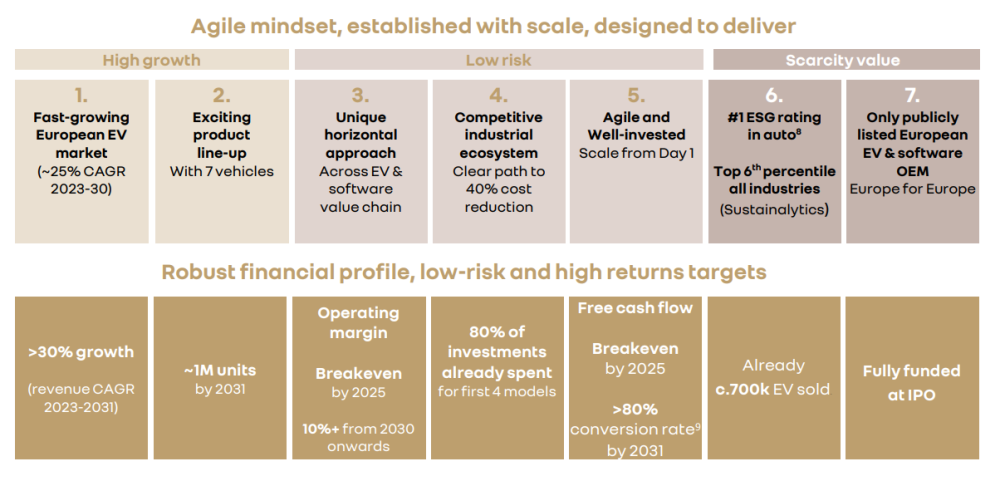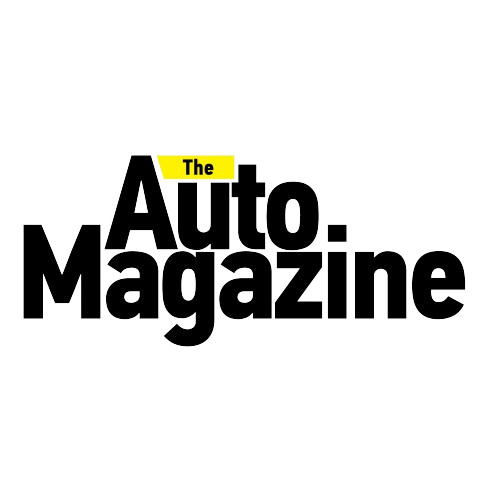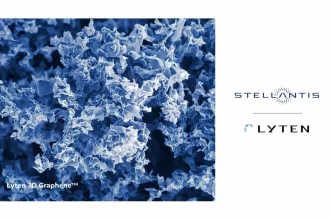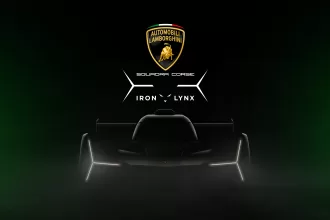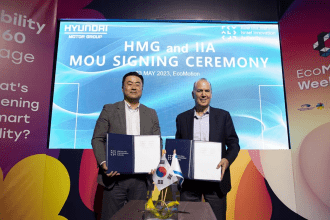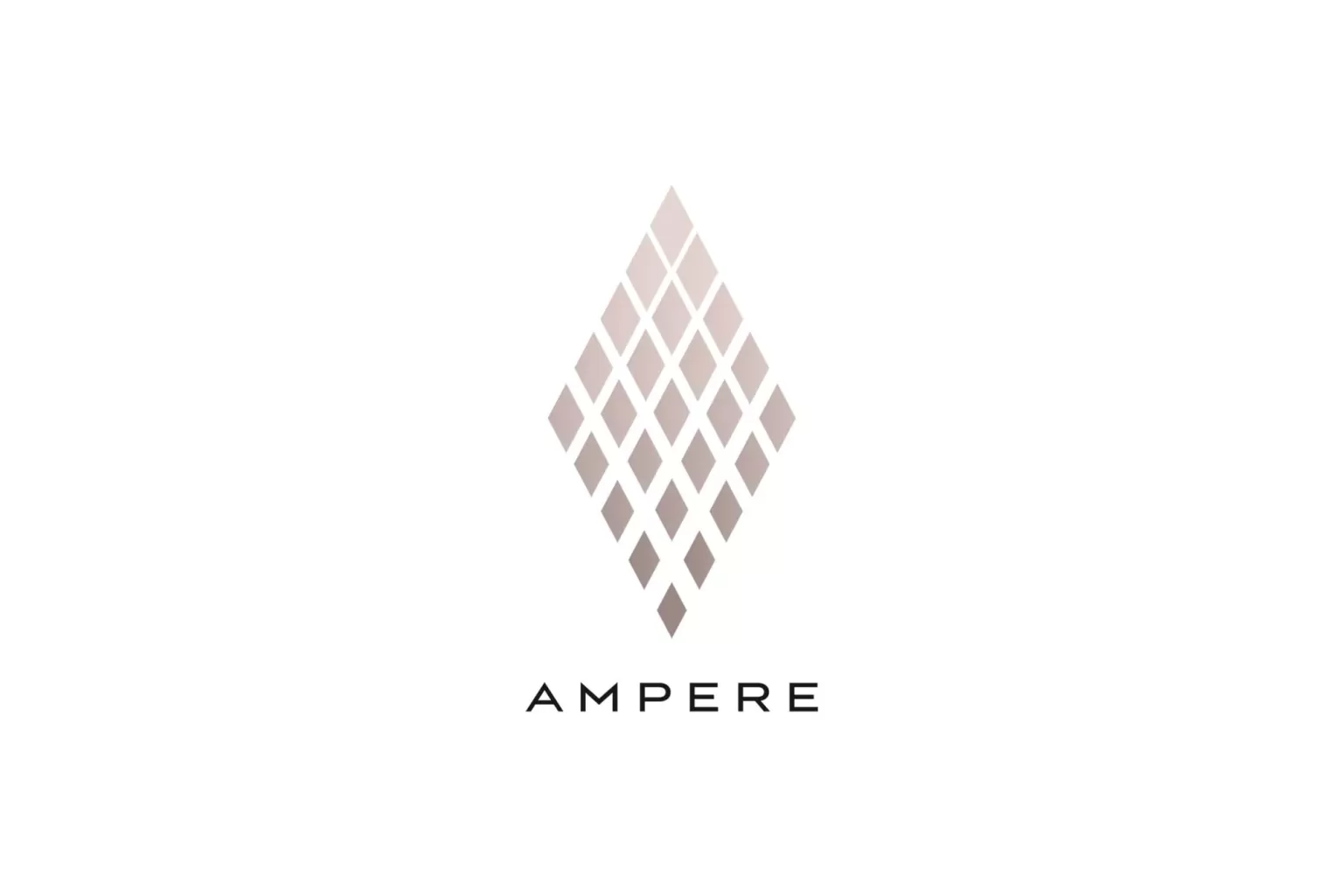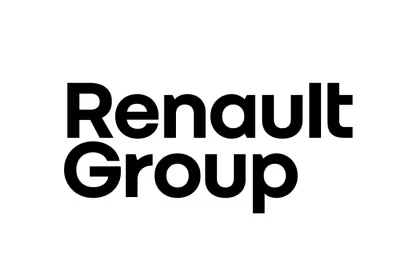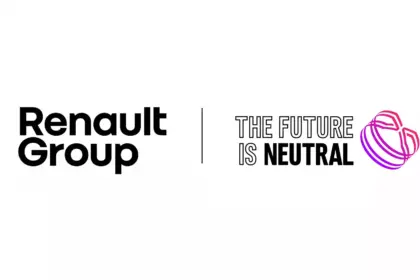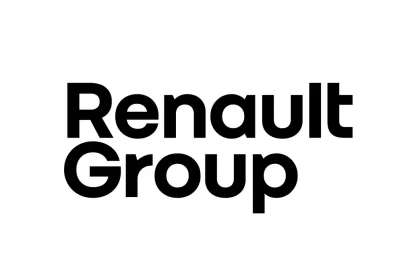Renault Group completed the first steps of its ‘Renaulution’ plan ahead of schedule, accomplishing the fastest turnaround in the recent history of the automotive industry.
Announced in November 2022, the current Revolution phase aims to transform Renault Group into a Next Gen automotive company built on five focused businesses addressing the new value chains arising from the transformation of the automotive and mobility industry: electric vehicles (EV) & software, new mobility services, circular economy, high-end vehicles in addition to ICE & hybrid vehicles.
Ampere is the driving force of the Group’s transformation: an autonomous company that designs, engineers, manufactures and markets electric passenger cars under the Renault brand in Europe. It aims to propel the Renault brand and position it as a leader in the new era of reaching zero-emission and software development.
Ampere’s ambition is to reach a double-digit market share with a double-digit operating margin, addressing the core vehicle segments in Europe by 2031.
On November 1st, 2023, Ampere ‘s carve-out was successfully completed. From Day 1, Ampere comprises 11,000 employees, of which 35% are engineers, focusing on EV and software technologies. Ampere benefits from strong assets for which most investments have already been made, including two EV-native platforms and a highly productive industrial ecosystem in France with low carbon emission standards: ElectriCity and Cléon.
Its structure is lean and efficient, enabling agile cooperation. Ampere is a data-driven company, built on technology, thanks to core IT platforms, completely connected, transparent and silo-breaking. It is led by a highly experienced Leadership team with expertise from global tech giants and international automotive companies.
A growth story thanks to cost advantage, complete product line-up and tailored customer experience
Democratizing EV in Europe addressing a broader customer base
As a leader in mid-size and compact cars in Europe, Renault Group, and therefore Ampere, is well positioned to address the B and C-segments that together are expected to represent 75% of the European EV market by 2030. These segments are forecast to grow by around 25% CAGR between 2023-2030.
To capture this opportunity, Ampere aims to democratize EV in Europe, by reaching EV / ICE price parity before competition in the B and C segments.
Ampere already has a major competitive advantage with its two EV-native platforms that are cost effective by design and fit-for-purpose:
- AmpR Small platform for the B-segment (previously CMF-B EV)
- AmpR Medium platform for the C-segment (previously CMF-EV)
Beyond these platforms, Ampere has a clear roadmap to reduce its cost, based on a holistic EV system approach. By 2027/2028, Ampere targets to reduce variable costs between the 1st and the 2nd generation of C-segment electric vehicles by 40%, following a continuous trajectory, along 3 main levers:
- EV engine(battery and e-powertrain):
- 50% reduction on battery cost per vehicle for the same range
- 25% reduction on e-powertrain cost per vehicle
- Vehicle (platform and upper body):
- 25% reduction in platform cost per vehicle
- 15% reduction in upper body cost per vehicle
- Operational excellence allowing a reduction of 50% of manufacturing and logistic costs
As a result of its continuous cost reduction plan, a first major step has been reached with Scenic E-Tech which is already at Total Cost of Ownership (TCO) parity with hybrid vehicles. The EV/ICE price parity is expected to be reached by 2027/2028 with the 2nd generation (Megane-E-Tech and Scenic E-Tech successors) while preserving margins. On the B-segment, Ampere will start with Renault 5 in 2024 and Renault 4 in 2025 (starting price of Renault 5 around €25k) and “Legend”, a new electric car below €20k (car to be revealed at the Ampere Capital Markets Day).
A complete product line-up
To achieve this objective, Ampere benefits from an exciting and competitive portfolio of A, B and C-segment cars initially consisting of five vehicles:
- Megane E-Tech, launched mid-2022, at a €38k entry price, is the vehicle that has repositioned the brand in the EV market and allows to conquer new customers (conquest rate from competition above 50% in Europe). It has a 2.2% of market share in the European EV market and is the number one car in the C-EV segment in France. This car benefits from a best-in-class infotainment and connectivity system: OpenR Link.
- Scenic E-Tech, on the market early next year with an entry price of around €40k, is the future of European family cars. Sustainability is at the core of its design with up to 95% of recyclable materials, offering a best-in-class range of over 625 km WLTP and a TCO already at par with hybrid cars.
- Renault 5, to be revealed in Q1 2024, is the rebirth of an iconic model already recognized by the press and social media. The Renault 5 will offer up to 400km of range for an entry price at around €25k competing with core hybrid B-segment cars. It will be equipped with the Reno avatar, a virtual copilot packed with artificial intelligence, learning from its users every day to better anticipate and answer their needs.
- Renault 4, to be launched in 2025, will be the reinterpretation of a universal car for the electric era. It will be a car with top versatility capitalizing on the winning ingredients of the Renault 5, such as the AmpR Small platform and the infotainment.
- “Legend”, unveiled today, is the fit-for-purpose urban vehicle with no compromise: best-in-class efficiency with only 10 kWh/100km, 75% lower CO₂ emissions than the average European ICE car sold in 2023 over its lifecycle, zero tailpipe CO₂ emissions and lower raw materials consumption thanks to its compact size. Made in Europe, the car will be offered at an entry price below €20k (before subsidies) which will represent less than €100 per month for our clients.
This line-up will be extended with two additional cars for the second generation, representing a total of seven vehicles by 2031. From a target of ~300,000 vehicles sales in 2025, Ampere expects to sell ~1 million vehicles in 2031, reaching a market share of ~10%.
Beyond its own line-up, Ampere is also designed to be a technological, manufacturing and business platform serving brands other than Renault thanks to the flexibility of the manufacturing lines, the modularity of the two platforms and the competitiveness of the cost base. Ampere will produce at least two models for Alpine, the next Micra for Nissan and another model for Mitsubishi Motors. Ampere will also support the Dacia electrification journey and will provide software solutions for the entire Renault Group.
A tailored customer experience beyond the product
Beyond the product, Ampere offers an exciting and reassuring customer journey. This is key as the EV market is shifting from early adopters to mainstream customers. For that, Ampere can rely on five strong assets from Day 1:
- Renault brand awareness of 98%
- Omnichannel customer experience: physical, building on Renault Group’s 4,700 dealership sites with 30,000 EV trained people all around Europe, and digital with the launch of a 100% online customer journey
- Renault Group’s unique aftersales network
- Comprehensive and sustainable charging solutions at competitive prices at home or on the road
- Mobilize Financial Services offers with financing solutions ranging from simple subscription for a few days to full leasing for several years
A story of technology excellence, innovation and partnerships
Software-Defined Vehicle Tech excellence
Moving to a centralized electronic architecture, being connected to the cloud, and having high calculation and connectivity capacities, SDV enables the permanent upgradeability of the car. It also allows a significant reduction in chip costs, an increase in the car’s residual value and it drives a stronger customer loyalty.
Ampere can rely, from Day 1, on 1,800 leading software and system engineering talents representing 50% of its total engineering workforce. Coming from the acquisition of Intel Europe in 2017, these engineers have strong expertise, facilitating development together with best-in-class tech players, Qualcomm Technologies and Google. Ampere’s team has developed a solution with Google, already embedded in the Megane E-Tech and Scenic E-Tech: OpenR Link. With this open approach, Ampere gets the best of both worlds: it retains the ownership of the IP and car data in Europe while benefitting from an environment that will ensure it will give its customers access to the ever-expanding universe of apps that make Google built-in so unique.
Ampere is an ambitious, holistic, and structural response of the European industry to the challenges coming from East and West.
Luca de Meo, Chief Executive Officer of Renault Group
In the true spirit of Renault, Ampere is engineered to make electric and connected cars affordable for all, addressing the imperatives of energy transition and seizing the growth opportunities on the market.
Ampere is first about striving for technological excellence and customer experience: two
EV-native platforms, a powerful line-up of seven cars, a new generation of centralized electronic architecture, an advanced Android-based software suite, and the most compact and efficient supply and manufacturing EV ecosystem, all created in Europe.
The uniqueness of Ampere is based on an open and horizontal approach with best-in-class partners, ensuring low-risk, flexibility, and smart capital allocation to navigate a fast changing and competitive environment.
Ampere combines the best of two worlds: the experience and firepower of a leading carmaker and the agility and innovation of a newcomer. Ampere is ESG in 3D, designed from scratch reaching the highest standard in terms of decarbonization, circular economy and fair transition.
I’m more than confident that the success of Ampere relies on the expertise and enthusiasm of a highly diverse team that has proven extremely effective in the last two years of preparation.
This horizontal approach enables Ampere to save time, cost, and reduce execution risk. In addition to sharing investments and securing competitive costs, it reduces development time by 50%, putting the cost of development on par with Chinese players and up to half of Western OEMs.
The first SDV is expected to be on the market in 2026.
Ready from Day 1 thanks to strong assets and Renault Group’s backing
Unique ecosystemic approach to cover the EV value chain
Ampere benefits from a unique ecosystemic approach to cover the full EV value chain with limited investments and technological agility, through partnerships with the best players for battery and e-powertrain development. Ampere is also a pioneer in zero-rare-earth
e-powertrain.
ElectriCity, local-for-local industrial footprint
Ampere’s manufacturing pole consists of four high-tech factories, ready Day 1, with a total capacity of 400ku/year, scalable to 620ku/year by 2028:
- ElectriCity:
- Douai and Maubeuge, two assembly plants to produce Ampere’s line-up and its partner’s models
- Ruitz to produce battery cases and electric components
- Cléon, being converted to become one of the biggest and most competitive European e-powertrain production sites
ElectriCity is a unique and compact ecosystem, grouping 75% of suppliers within a 300km radius and 75% of potential customers within a 1,000km range. This allows a reduction of logistic costs by 40%. Ampere’s manufacturing pole will deliver best-in-class productivity with a car assembly time of 9 hours, starting with Renault 5. Cost-wise, ElectriCity will be as competitive as Eastern European plants by 2025.
ElectriCity’s carbon footprint (industry scope 1 and 2) will be net zero by 2025. This will be achieved by following a clear decarbonization path based on the optimization of utilization rates, right-sizing, optimized energy management thanks to a 4.0 manufacturing system and digital tools combined with low carbon energy.
Renault Group and Ampere, a highly beneficial relationship for both sides
Ampere will leverage Renault Group’s other business units. It will benefit from complete financing capabilities (including insurance) from Mobilize Financial Services, the mobility and energy services (including charging) from Mobilize Beyond Automotive and the circular economy-related services from The Future Is NEUTRAL.
Leveraging the Renault Group ecosystem – Renault brand awareness, distribution network, manufacturing capabilities and procurement scale – is estimated to lead to cost avoidance in the magnitude of €15bn for Ampere.
This relationship between Renault Group and Ampere will be reciprocal and balanced in terms of flows and underpinned by clear arm’s length contractual agreements that fully ensure both companies’ interests are respected.

ESG native
Ampere is truly ESG-native. Ampere’s ESG purpose is based on three pillars:
- Decarbonization beyond electrification, targeting net zero company by 2035,
- Circular economy to preserve resources, based on The Future Is NEUTRAL and Mobilize,
- Fair transition, with high ambitions in terms of human rights and transparency in the supply chain, as well as being an ethical and inclusive workplace.
Sustainalytics rates Ampere #1 in the automotive sector4 globally with a score of 12.8, over 4 points better than other pure EV players.
Targeting net zero company by 2035
Ampere aims to be a net zero company by 2035, following a cradle-to-grave approach. The carbon neutrality roadmap relies on:
- Electrification: full EV line-up with zero tailpipe emissions,
- Industry: targeted net zero for industry scope by 2025,
- Usage: low-carbon energy charging, based on the IEA5 forecast, and
- Suppliers: objective to reduce its supplies’ emissions by up to 30%, and for battery sourcing by up to 35%, by 2030.
A new approach to suppliers
Ampere will streamline its panel of suppliers, reducing it by around 40% while engaging in a long term and more strategic relationship with its suppliers, seeking opportunities to co-invest, co-create, and co-develop. Ampere will make sure this ecosystem complies with the highest standards in terms of human rights, transparency, and ethics.
With high-performance cars, competitive prices, a strong brand and high-quality services, Ampere is well positioned to catch the growth on the European EV market.
Ampere targets a 30% average annual growth of revenues between 2023 and 2031. From 10 billion euros in 2025 with 4 vehicles, Ampere will target more than 25 billion euros of revenue in 2031 with 7 competitive vehicles.
Thanks to its clear roadmap of 40% cost reduction in one generation, Ampere will be able to gradually reduce vehicles’ prices while improving margins. Indeed, benefiting from the rolling start of Renault Group on EV and software, Ampere provides a low-risk and high return financial profile with the ambition to reach breakeven point in 2025 (both in operating margin and in free cash flow) and targets an operating margin above 10% from 2030 onwards. Beyond its own
line-up, Ampere is also designed to be a technological, manufacturing and business platform for other brands which represents further upsides for Ampere.
The recent carve-out, successfully completed two weeks ago, is a first significant milestone for us, and we are preparing the next strategic move: the IPO is an opportunity to further accelerate the development of Ampere without drawing on Renault Group resources and it allows Renault Group to accelerate on the roadmap to reward its shareholders.
Thierry Piéton, Chief Financial Officer of Renault GroupGovernance: leading the organization independently
Ampere’s Corporate Governance will meet the highest standards of independence and will be lean to ensure the speed of decision and agility required to match its business model: Ampere’s Board of Directors will count 11 directors with strong expertise in tech and automotive, including four independent directors (more than 1/3 of total directors), six Renault Group directors (including the Chairman) and one Nissan director. It will be chaired by Luca de Meo.
There will be three dedicated committees (Audit & Risks, Nomination & Compensation, Strategy & Sustainability).
Robust financial profile, low-risk and high returns targets
A growth story
Ampere targets €25bn+ revenues in 2031 and 10%+ operating profit margin from 2030 onwards with a clear milestone to reach its breakeven point in 2025 (operating margin and free cash flow).

Revenues are expected to grow at a 30%+ CAGR6 between 2023 and 2031, from c. €2.8bn in 2023 to €25bn+ in 2031, driven by:
- Vehicle sales (targeted 90% of revenues in 2031; ~1 million vehicles) sustained by an increasingly affordable line-up of 7 vehicles, as Ampere will deliver on its 40% cost reduction roadmap between the 1st and the 2nd generation of C-segment electric vehicles by 2027/2028.
- Sales to partners include in particular EV and software technologies sold to other brands of Renault Group, Alliance members or external partners. Sales to partners represent half of Ampere’s revenue in 2023 and is expected to be 20% in 2025. By prudence, the business plan of Ampere only includes sales to partners that are already contracted, which explains the gradual decrease of its share of total revenue overtime. However, new partnerships should represent a significant opportunity for Ampere to develop its activity.
- After-sales revenue will grow in line with the increase of vehicles sold, helped by the fact that SDV will secure a longer loyalty to the after-sales network and allow the offering of new types of services to customers.
- Other revenues include:
- CAFE (Corporate Average Fuel Economy) credits sales to Renault Group, as Ampere will produce most of the Group’s EV vehicles.
- Revenues from new services (apps, connectivity, autonomous driving add-ons and charging / energy services) projected to reach €500 per year per vehicle, of which 60% for Ampere and 40% for Renault Group.
Operating margin, breakeven in 2025 and 10%+ from 2030 onwards
Operating margin is targeted to reach breakeven in 2025 and 10%+ of revenue from 2030 onwards on the back of 3 main levers:
- Volume and fixed cost absorption
- Variable cost optimization, embodied in Ampere’s plan to reduce costs by 40% between the 1st and the 2nd generation of vehicles by 2027/2028. It will allow and more than offset the decrease in average selling price of the line-up as Ampere strives for EV / ICE price parity
- Distribution costs optimization, enabled by both the proximity of Ampere’s customers and suppliers and the focus put on retail that should represent more than 50% of its mix
Breakeven free cash flow in 2025
Thanks to its already largely invested business model, Ampere targets to generate cash earlier than most competitors with a targeted free cash flow breakeven as early as 2025. On the road to achieve this key milestone, Ampere’s cumulated cash burn for FY 2024 and H1 2025 would amount to a maximum of €1.5bn.
This effective cash management would translate into a high >80% cash conversion rate7 in 2031.
From c. 25% of revenue expected in 2024, Capex and R&D is targeted to be at 10% on average over 2024-2031 and c.8% on the long-term.
Next steps
Renault Group has funded the first phase to establish Ampere. This first phase was completed with Ampere’s carve-out on November 1st, 2023. Ampere now enters a new phase of acceleration of its development. Raising capital from a potential IPO would enable Ampere to grow faster, more autonomously, without further pulling on the Group’s resources and ultimately would provide enhanced financial returns for Ampere’s investors and to Renault Group.
With a potential IPO, Ampere would be fully funded. A portion of the proceeds would fund capital expenditure, R&D and potential external investments in particular in three key areas:
- The further strengthening of Ampere’s software value chain capabilities
- The acceleration of cost reduction activities, especially the design and development of Ampere’s second-generation C-segment platform
- The development of new cars
Part of the proceeds are already secured with the agreed investments of our first cornerstone investors: Nissan and Mitsubishi Motors investing in total up to €0.8bn in Ampere. Qualcomm Technologies also considers investing.
EV is a different sport requiring a differently set up athlete. The creation of Ampere comes with a new work culture, perfectly suited to the specificities of the EV ecosystem. Ampere will benefit from a self-controlled Tech backbone, a proprietary IP portfolio, and a highly skilled workforce. Its dedicated management and governance will ensure full focus to deploy a fully-fledged strategy to establish the European front-runner on the fast-growing EV market.
Establishing Ampere as an autonomous entity has already paid off with numerous
cost reduction and other operational initiatives. The transparency required by Ampere’s potential listing would further reinforce full accountability of Ampere’s management and workforce.
Ampere is the 1st European EV & software player that comes with such a low-risk approach. It benefits from the Renault Group ecosystem, and its unique horizontal approach enables to deliver rapidly in a changing environment with less investments.
Conclusion
